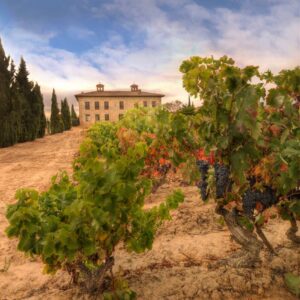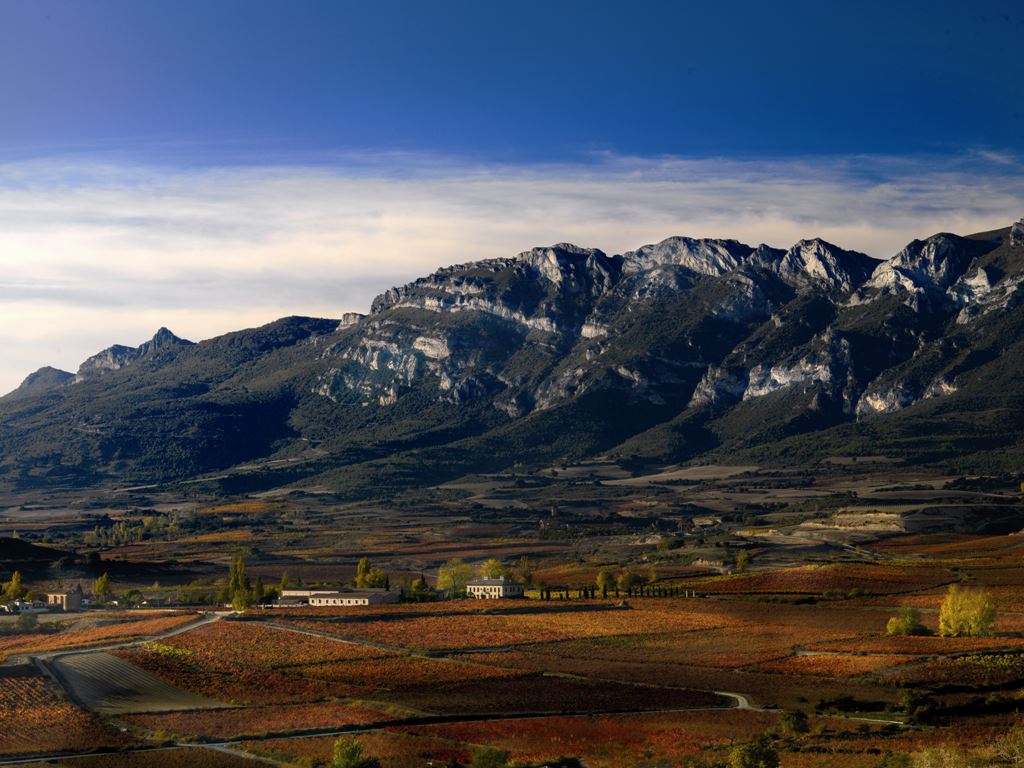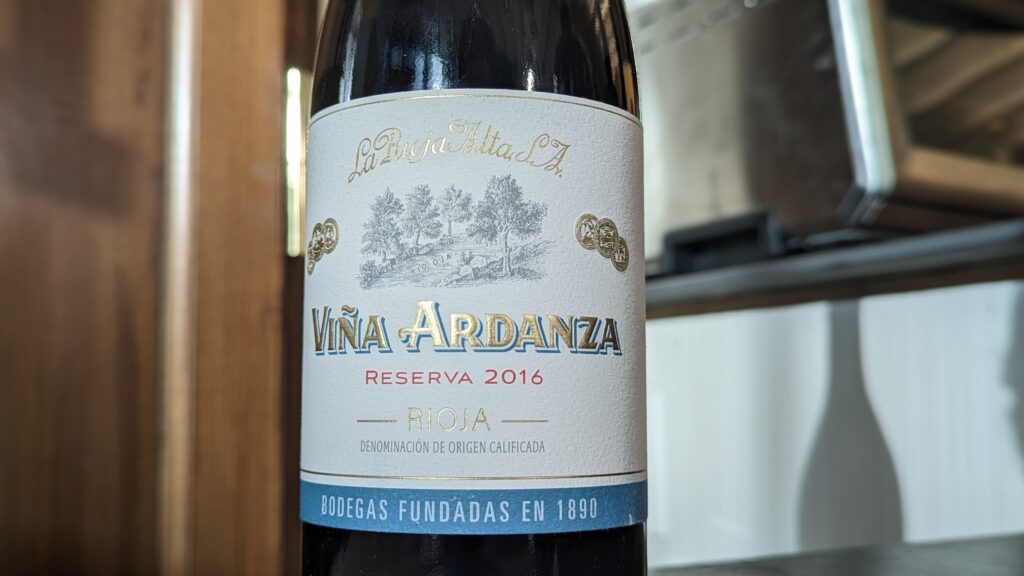The excitement could be felt in the air as the winemaking team and the executive team started to taste wines that were aging in bottles for their Rioja Reserva wine as the release date onto the market was soon. It had aged three years in barrels and three years in bottles, much longer than local regulations require. Many devoted restaurants and retail stores around the world have been waiting in great anticipation for this wine as it is not made in every vintage; on average, six vintages are released in a decade. But as the group tasted the 2002 vintage, right before bottling the wine, the winemaker Julio Sáenz said, “I am not happy with this wine.” There was dead silence for what seemed to be an eternity. “My God, you had six years to tell us that, and you are just saying this now,” exclaimed the company president.
This high bar is nothing new for the Rioja wine producer, La Rioja Alta, S.A., founded in 1890, as they have held wine back in barrels to age longer many times, or they would not make a wine – which has happened many times, or if a wine is not living up to expectations, such as an assessment made at the last minute, then sometimes all of the wine bottles have to wait in the cellar for a lot longer, even though the customers are expecting delivery of these bottles soon.
La Rioja Alta ensures they have plenty of wine barrels, around 50,000 at last count, so if a bottling needs to go back to cask, that is always an available option. And they have eight years’ worth of stock with 6.4 million bottles in their cellars; another vital part of high-quality traditional Rioja winemaking is aging in bottles to allow the wine to express all its multifaceted qualities.
Good Enough Is Not An Option
“It was really risky,” said the president of La Rioja Alta, Guillermo de Aranzábal Agudo, regarding holding back the 2002 Viña Ardanza Reserva. The relationships they have with longtime restaurant and retail accounts that service Spanish wine lovers anxiously waiting for the next Viña Ardanza is one of the most important things and he would never want to jeopardize even one of those relationships, let alone all of them. But La Rioja Alta has such a devoted following because they would never release a wine that wasn’t ready. When someone buys a bottle, he knows he can drink it that night and have an excellent experience. So, even in the toughest of circumstances, when a wine is about to be released, they have to take the more challenging road of disappointing their customers with a delay so they never have to disappoint with quality.
La Rioja Alta only uses their own vineyards to source grapes for their wines and they make their own oak barrels, too, using American oak that is exported from the US and ages at their La Rioja Alta winery for three years, located in the historic town of Haro in the Rioja wine region of Spain. American oak and Rioja wine have a beautiful relationship that goes way back; hence, La Rioja Alta only uses American oak to keep the traditional style alive. When it comes to racking their wines, siphoning the wine from one vessel to another to separate the sediment, they achieve this task by hand racking the wine by candlelight from barrel to barrel so they can see any fine particles or haze and only four workers have enough experience in the winery to be given this task. They rack all the barrels twice a year and if one of the workers finds anything odd about any barrel, Julio will come in and taste it with his team and run analysis on the wine; if any barrel is considered even slightly unfit for any reason, it is not used. Due to this diligent racking process, the wines do not need to be filtered and according to Guillermo, filtration takes some of the aromatics and flavors out of the wines.
Yet La Rioja Alta is taking quality control practices to another level by installing sensors in wine cases shipped to various markets to collect real-time data about temperature, humidity, light and vibration. The wines can leave the winery in perfect condition but since the bottles are a long way from the final customer’s hand from the winery, there could still be issues during transportation and storage, so, they need to ensure that all countries where they export wines receive them in ideal conditions.
Established From The Beginning
s Guillermo looked at a bottle of their excellent 2005 Gran Reserva 890, he noted that the ‘890’ on the label was to honor 1890, the year they were founded and when the mission to make great wines at all cost was conceived. During that first year, La Rioja Alta brought in a French winemaker who pushed for barrel aging as he wanted to make wines built to age. There were many ups and downs throughout the several decades as it took a while before Rioja was taken seriously as a fine wine region. But today, La Rioja Alta still keeps to that mission and seems to even become stricter with their quality control, as in over 130 years, they have only made four vintages of their very top wine, Viña Ardanza – ‘Selección Especial’ Reserva, which are 1964, 1973, 2001 and 2010.
But when someone says to Guillermo that he is ultimately in charge of the fate of the wine because he is the company’s president, he replies, “Yes, I am the president, but the boss is Julio.” Guillermo’s family has been involved with the La Rioja Alta winery for five generations and from the beginning, the priority was to have a great winemaker who would go to great lengths for the best wine possible and today, he is not only living up to that priority but every day brings in new tools to empower Julio to go even further.
***Link to original article published on Forbes: https://www.forbes.com/sites/cathrinetodd/2023/06/23/64-million-wine-bottles-stored-in-one-of-the-most-quality-conscious-winery-cellars-in-the-world/
2016 La Rioja Alta, S.A., Viña Ardanza Reserva: 80% Tempranillo and 20% Garnacha. Guillermo calls this wine “the archetype of Rioja” as it blends Tempranillo from the sub-zone Rioja Alta and Garnacha from the sub-zone Rioja Alavesa, each from their classic home. Tons of freshness and vibrancy to this wine with ripe red raspberries and orange peel with a subtle underlying note of smoldering earth and dried bay leaves with a long, flavorful finish with hints of nutmeg and purity of fruit that is just stunning at the end.
2005 La Rioja Alta, S.A., Gran Reserva 890: 95% Tempranillo, 3% Graciano and 2% Mazuelo. A very concentrated wine with succulent flavors of cassis and blackberry liqueur that has enticing hints of baking spice and toasted coconut, displaying the incredible heart of the marriage between American oak and Rioja wine with a silky texture and multilayered finish with new leather, truffles and still plenty of fruit to balance the complex notes perfectly. Fantastic!


















